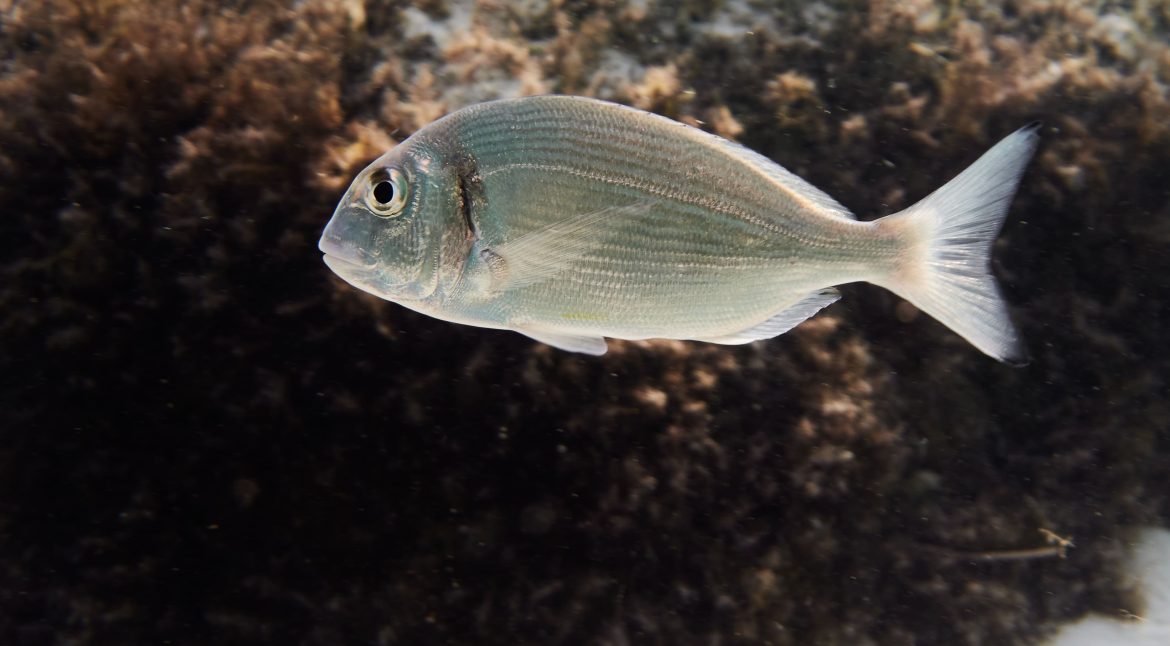In this study we used a self-feeding system to investigate feed choice based on organoleptic cues in gilthead seabream. Two consecutive experiments were done with the same group of fish in summer (Exp-1: average body weight = 38g; average water temperature = 25.2ºC) and autumn (Exp-2: 100g; 17.3ºC) using a dual-choice setup (2 self-feeders per tank) to examine whether seabream can discriminate and show preference between 2 of 3 isoenergetic diets being tested: a control standard diet (C); a positive diet (P) containing high levels of fish, squid and krill meal; and a negative diet (N) in which 1.5% quinine hydrochloride dihydrate was added to the C basal diet. Exp-1/-2 had 3 phases (Ph): Ph-1) acclimation with C only; Ph-2) dual-choice; Ph-3) dual-choice with reversal of feeders. A subsequent experiment in winter (Exp-3: 130g; 13.6ºC) was performed using a single self-feeder per tank, with each tank being fed either C or N, to corroborate the aversive response to N in the absence of dietary choice. Results showed that seabream clearly discriminated quinine in the diet, having negative preference (P<0.05) towards the N diet in both Ph-2 and Ph-3 of Exp-1 and Exp-2. Surprisingly, when no choice was available (Exp-3), seabream equally demanded N and C diets. However, presence of the bitter substance substantially increased feed refusals, assessed by non-consumed feed (14.3% rejection of demanded feed in N, versus 2.6% in C). On the other hand, results of positive conditioning with a palatable (P) diet were variable. In Exp-1, P diet showed no significant preference over C and demands were numerically lower (P

Autores: Morais, S., Puchol, S., Leal, E., Angotzi, A.R., Cerdá-Reverter, J.M.
Libro/Revista: XX International Symposium on Fish Nutrition and Feeding, Sorrento, Italy
